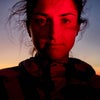New perk: Easily find new routes and hidden gems, upcoming running events, and more near you. Your weekly Local Running Newsletter has everything you need to lace up! Subscribe today.
It’s easy to get caught up in the image of athletes crying with elation at that finish line on the Placer High track. But watching the 2025 Western States 100 unfold from the ground, my prevailing observation is just how hard this quad-bashing-rotisseri-oven-pressure-cooker of a race is to get right.
For so many—the 57 entrants who didn’t make it to the start, 84 runners who DNFed, and many more who walked, crawled, and willed their way in—the day they dreamed of for months did not materialize.
Defending men’s champ and heavy favorite Jim Walmsley scratched from the race a month ago due to a nagging knee injury. Top contenders Riley Brady, Heather Jackson, Eszter Csillag, Rod Favard—the list goes on—were forced to abandon as various issues like an uncooperative stomach and a calf strain derailed their ability to put one foot in front of the next.
Peterman, the 2022 champ, was reduced to a walk for the final 45 miles. He finished nearly eight hours slower than his winning time—a testament to his grit and respect for his competitors and this race. (As well as the persuasive power of his crew and aid station volunteers.) Even Marianne Hogan suffered from heatstroke en route to finishing third. She was in the med tent until 6 a.m. the next day. (Runners: Fear the day this lady makes it to a finish line unscathed.)
Ben Gibbard, the lead singer and guitarist for Death Cab for Cutie, finished in 27 hours and 15 minutes after what his pacer Nick Triolo said was the darkest hole he’d ever seen the multi-time 100-mile finisher go into.
Given the expert-level difficulty of the Western States puzzle, I figured I’d use a few minutes in my semi-sleep deprived and sweaty state to see what we can learn from the 52nd running of this iconic race. Here are my top-10, off-the-dome takeaways that I will probably regret in a week, in no particular order:
1. Salt Lake City is officially an ultrarunning epicenter.
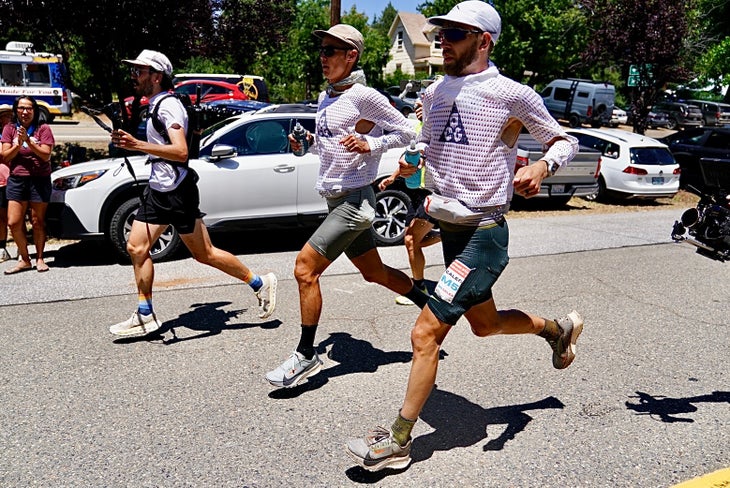
Jim Walmsley, Katie Schide, Tom Evans, Ruth Croft, Abby Hall—nearly every recent Western States winner has prepared for the race in the greater Flagstaff, Arizona, region, Grand Canyon included. (The one exception is Courney Dauwalter, who could probably win this race after training on the moon.)
While Salt Lake City, Utah, has quietly attracted a smattering of top trail and ultrarunners for many years, it’s historically been dwarfed as a running mecca by Flagstaff and Boulder, Colorado. But recently it’s felt like a critical mass has decided to make the Wasatch Range home. Now, the region can lay claim to its first Western States winner. Caleb Olson, who lives just outside the city in Draper with his wife, Morgan, and seven-week old son, Marshall, won the race in 14:11:25—the second-fastest time ever and just two-minutes off the course record.
Given the Boulder versus Salt Lake City rivalry, this pains me a bit to write. But we can deny it no longer: Salt Lake City deserves a spot on the Mount Rushmore of U.S. trail running hot spots.
2. It’s time to scrap the Golden Ticket system.
A multi-time Western States winner floated this idea to me this weekend, and I can’t get it out of my head. Back in their day, pretty much any fast runner was let into the race, encouraging the best in the world to go head-to-head nearly every year. Now elites have three ways of earning a spot on the start line: finish top 10 the previous year, earn a Golden Ticket at one of six select races held around the world, or get extremely lucky via the lottery.
This barrier to entry excludes many top runners and, in some cases, means that athletes show up overcooked from racing their way in. Take Abby Hall, the 2025 Western States champ. She wasn’t supposed to even be in the race. Hall finished fifth at the Black Canyon 100K in February, two spots out of a Golden Ticket, and fourth at the Chianti Ultra-Trail by UTMB 120K in April, again two spots out.
But Lady Luck ended up smiling upon her. Riley Brady, who won Black Canyon 100K, already had a Golden Ticket into States. And Emkay Sullivan, who finished third, got pregnant and deferred her ticket. That meant that the ticket rolled down twice to Hall. The rest is history.
Given the 369 competitor cap, letting more elites into the field poses challenges as the Western States board balances the pointy end of the field with the thousands of runners who enter the lottery each year, hoping to finish under the cutoff. But that’s an issue for race director Craig Thornley and team to figure out.
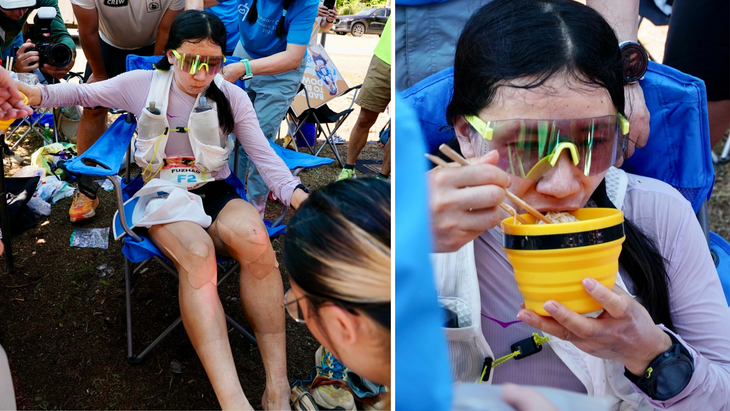
3. International athletes performed better than ever.
Speaking of the Golden Ticket system, there are six Golden Ticket races each year. And recently—thanks to Western States’ special partnership with the UTMB World Series—half of the Golden Ticket races have moved overseas to help attract international talent. In some ways, it seems to have worked. Six of the top 10 women and four of the top 10 men this year are international: Fuzhao Xiang (China), Marianne Hogan (Canada), Ida Nilsson (Sweden), Fiona Pascall (U.K.), Hau Ha (Vietnam), Emily Hawgood (Zimbabwe) on the women’s side, and Kilian Jornet (Spain), Dan Jones (New Zealand), Peter Frano (Slovakia), and Kai Hiroki (Japan) on the men’s.
My back-of-the-napkin math concludes that’s the highest ever combined number of international athletes in the men’s and women’s top 10. Of course, both winners this year are American, and you could quibble that the win matters more than the depth. But it’s indisputable that the pointy end of the race is globalizing. (It’s worth noting, though, that most of these international athletes spent time training this spring in the western U.S.)
4. High volume is in (again).
Of the top-10 women and top-10 men, nine in each list have shoe sponsors. The outliers are Kai Hiroki from Japan, who finished 10th in the men’s race, and Keely Henninger, who finished ninth in women’s race and was previously sponsored before starting medical school last fall.
At this level, sponsorship allows most of these athletes to run full-time or to go down to working part-time. Caleb Olson, for example, has worked part-time in tech. This obviously affords many of these athletes more time to train and, just as importantly, to recover. Abby Hall, who quit her corporate job several years ago, topped out at 140 miles/22 hours a week during her Western States training block. That week looked as follows: 23 miles (3.5 hours), 25 miles (4 hours), 7 miles (1 hour), 7.5 miles (1 hour), 21 miles (3 hours), 37 miles (6 hours), 19 miles (3.5 hours). And that’s just the running. Her build also included a 23-mile (3.5-hour) run followed the next day by a 42-mile (7 hour) run. And that’s not including all of the ancillary activities like strength work and heat training.
Hall’s build looked quite similar to 2024 winner Katie Schide and China’s Fuzhao Xiang (who finished runner-up the last two years, both in historically fast times)—unsurprisingly given they are all coached by Jason Koop. The days of athletes running 70 miles a week and winning the race (e.g. Cat Bradley in 2017, Clare Gallagher in 2019) seem to be fading.
5. “Silly is fast.”
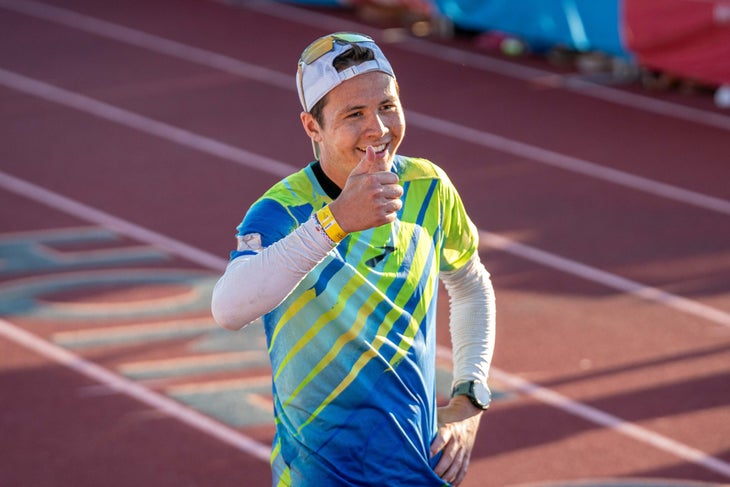
Hands-down my favorite moment from the race was when Chris Myers, just four minutes behind Caleb Olson in first and 12 minutes ahead of Kilian Jornet in third, used a snorkel and scuba goggles to cross the American River at the infamous Rucky Chucky river crossing. (It bears noting that the water was not very high this year, with runners wading only knee to thigh deep.) He then had to carry said snorkel and goggles two miles and over 1,000 feet of climbing up the trail before he could leave them with his crew.
I was with his crew at the Foresthill aid station (mile 60) when they were debating about whether to let Myers take his swim equipment at the river. “He’s running too well to be silly,” seven-time Western States winner Scott Jurek said. But when Myers flew into the aid station, he doubled-down: Bring the snorkel.
“I figured running up from the river, every time it would feel hard I’d look down at my hand holding the snorkel and would go hehe,” he said. “And I’d remember that everything would be fine.”
And that’s what happened.
“It was worth it,” he continued. “People take this so seriously, it’s just running.”
View this post on Instagram
6. Western States is still very grassroots.
Everyone loves to talk about how ultrarunning is so big now. Not so fast. Sure, it’s grown in even the decade I’ve been around. But States is the biggest ultrarunning race in the U.S.—and one of the biggest in the world—and you can still stroll up to the Placer High track to watch the winners finish. No tickets needed, and no security to be seen. (Which is actually maybe a little alarming.) Keep in mind 39.4 million people live in California alone, according to the 2024 U.S. census. As soon as you leave that track, the race disappears with the 12-lane freeway.
The grassroots nature of the sport, and Western States in particular, has a few drawbacks—there’s very little drug testing (and no out-of-competition testing), there are no regulations around shoes (like on the roads and on the track, which means athletes can race in prototypes and unreleased models), and most importantly, from my perspective anyway, there is no media center (or even WiFi) at the finish line, reducing your humble correspondent to publishing her story about the race while hotspotting from her phone. (My battery was at 2 percent when I updated the story with the women’s race results.)
But the luddite vibe also comes with grassroots, trauma-bonding charm.
Case in point: After crewing Chris Myers all day, who ultimately finished second ahead of Kilian Jornet, seven-time Western States winner Scott Jurek pulled an all-nighter working the Quarry Road aid station at mile 90.7, only stopping after he helped break the aid station down at 11:30 on Sunday morning.
“I got 30 minutes of sleep,” he croaked to me later that day. Ten seconds later someone asked him for a selfie.
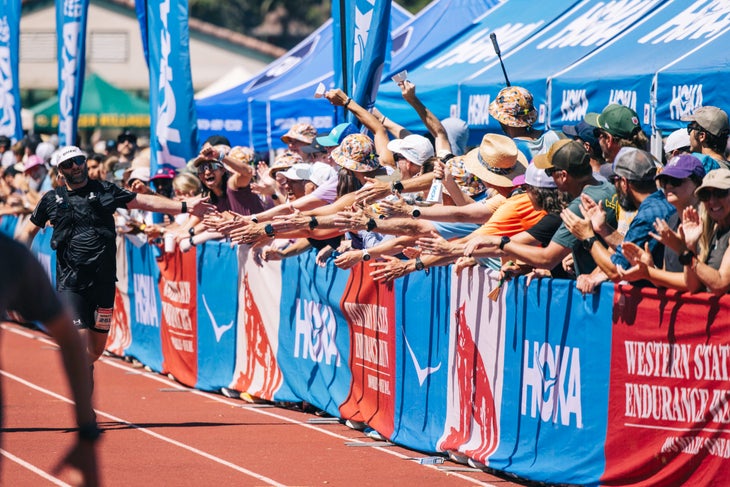
7. Kilian Jornet didn’t win, but he showed why he’s the best of all time.
Western States was not designed for Kilian Jornet. Sure, he won it in 2011—and had no interest in coming back.
“I thought it was so flat and boring,” Jornet told me on Sunday.
A decade and a half later, the four-time UTMB champion and Everest record-holder, to scratch the surface on his resume, has nothing to prove. So he’s finding fun in creating new challenges for himself. And what better challenge than training for a very fast, very hot, very “boring” race on highly technical mountains in cold, wet Norway? (Throw in a nagging injury and a newborn after his wife Emelie Forsberg gave birth to their third daughter in March.)
Despite these hurdles, Jornet finished third in the fifth fastest time ever. Only three people—Jim Walmsley, Caleb Olson, and Chris Myers—have run the course faster. Jornet squashed his 2011 winning time by 80 minutes at age 37. He also closed remarkably quickly, making up seven minutes on Olson in the final quarter of the race. But most importantly to me, he demonstrated that he wasn’t afraid to fail, and he wasn’t afraid to get beaten. When I asked him to rate his performance, he gave it a nine out of 10.
He’s clearly highly competitive, but his biggest competitor is himself.
8. Heat training still requires heat management.
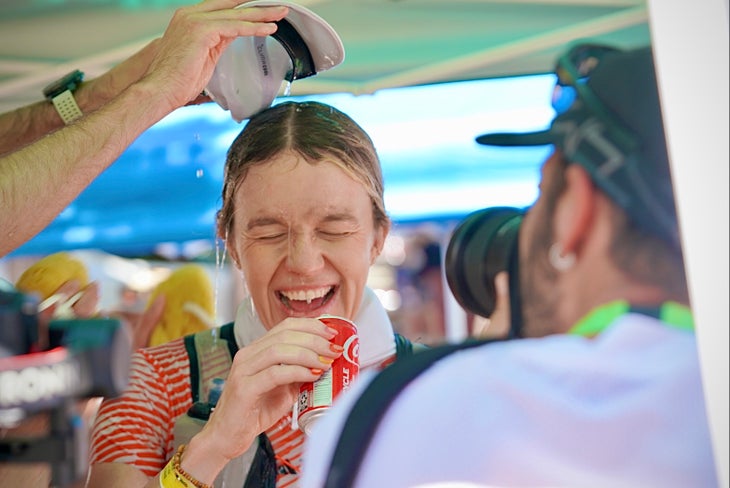
There aren’t a lot of races out there where, at the pre-race briefing, the race director encourages runners to drop out. Western States is one of them.
“I’ve seen runners end up on dialysis in the hospital,” race director Craig Thorney told runners on Friday. “Don’t become one of them. It’s okay to stop.”
The sentiment isn’t one of weakness—the “canyons” section of the course, largely on fully-exposed trail in stagnant air under the blazing California sun, got up to a recorded 99 degrees Fahrenheit, Thornley said. The real-feel felt more like 120.
But this is always the case at Western States, and runners have been trying to crack the heat-management code from the beginning. In recent years, heat training has become all the rage among pros and mid-packers alike, with David Roche publicly pushing the limits of active heat training in a waterproof suit to Kilian Jornet riding the trainer bundled up in his home hotbox.
This year’s race was a testament to the fact that preparation will only get you so far—you need to take every possible heat-management advantage you can. The Nike athletes, Caleb Olson included, raced in a shirt prototype made from a double layer of fishnet fabric. I tried it on at the Foresthill aid station, waving my arms around in the hot air, and felt noticeably cooler. Athletes trained by coaches from the coaching conglomerate CTS, including Abby Hall and men’s fourth-place finisher Jeff Mogavero, fully submerged themselves in kiddie pools filled with ice. Athletes who took these precious extra seconds to cool off, hydrate, and tie ice bandanas around their necks, refill their bottles, and detour to jump in rivers had a much better fighting chance than those who didn’t.
That’s not to say heat training isn’t beneficial—every pro I’ve talked to did passive and/or active heat training as part of their build. But they also didn’t overdo it.
9. The race no longer starts at Foresthill.
“The race starts at Foresthill,” longstanding wisdom has decried. “Just make it to mile 60 feeling good and runners will come back to you.” That’s felt increasingly untrue in recent years, and it’s pretty undeniable now: The race starts at the start.
“We went up the Escarpment and I thought, ‘Oh gosh, it’s going to be a hard day,” Kilian Jornet said at the finish after running the fifth-fastest time ever and 80 minutes faster than his winning time in 2011. “‘They need to run slower. It’s nice views; it was beautiful to see the forest, the lakes, the savanna. I don’t know why they need to push so hard, we can just enjoy it.’”
He was joking, but only kind of. The men’s race went up the Escarpment, that initial 2,550-foot climb, under course record pace. On the women’s side, Abby Hall was the first to the top and essentially held her lead until the end. All top-10 finishers on the men’s and women’s side were in the top 20 by the top of that climb.
This year, the real crux of the race seemed to be Devil’s Thumb, the aid station at mile 47.8 at the top of a long, exposed climb to Michigan Bluff at mile 55.7. By then, the top three men’s places were locked until the finish. A few more women hung with the leaders until then, but the three podium spots were all there, with Hall sizeably in the lead after Michigan Bluff due to Martina Mlynarczyk dropping there after trading places with Hall all morning.
Fuzhao Xiang started out relatively conservatively—at the halfway mark, she was 17 minutes behind Hall. She closed nine minutes after in the back half, but the deficit was just too much to overcome.
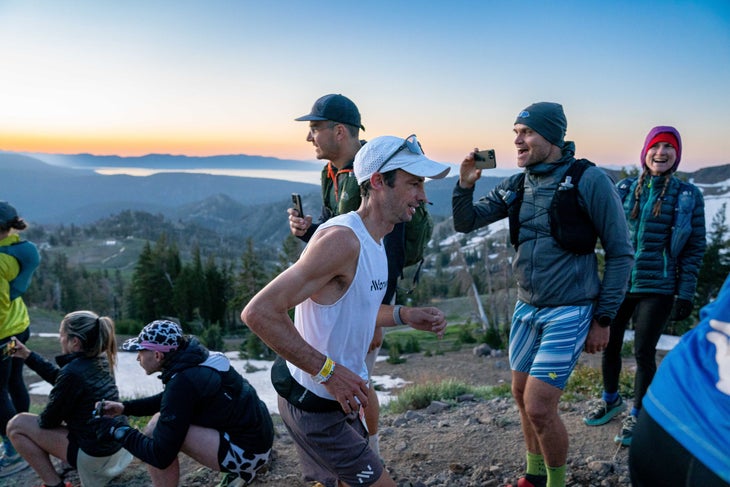
10. Being left off predictions lists is a blessing.
Save for maybe Ultra-Trail du Mont-Blanc, no ultramarathon receives as much attention as Western States—a fact undeniably magnified by the Golden Ticket system. Fans of the sport prognosticate all year long about who they think will win, podium, and finish top 10. Add in that running contracts, such as they are, can be won or lost, reduced or doubled, based on Western States results.
That leads to a unique pressure-cooker situation, which ends up being yet another variable athletes have to learn to handle—often with few opportunities to practice it. I don’t know exactly what did in Rod Farvard, who finished second last year after giving Jim Walmsley a real run for his money nearly until the end. But last year he had the luxury of racing as a darkhorse, while this year he was heavily favored to podium.
Similarly on the women’s side, pre-race favorites Eszter Csillag, Riley Brady, and Tara Dower all had tough days for various reasons.
Conversely, both Caleb Olson and Abby Hall flew relatively under the radar before the race. I didn’t have either in my top five picks. I would have pegged Olson for the podium, but he became a dad on May 1 (and subsequently went semi-Strava dark). And despite her success at the 100K distance, Hall up until now hadn’t executed a 100-miler end-to-end.
Chris Myers endorsed this theory when I asked him if he’d be back to try and improve on his second-place finish next year.
“No,” he said. “There’s too many other races I want to go run. Plus, look at what happened to Rod this year. He had a target on this back. I think it’s a lot easier to come in with no expectations than to return as someone to beat.”
In the words of Olson, who crossed the finish lining holding his son in one hand and making a “shhhh” gesture with his pointer finger in the other:
“If they sleep on you, tuck ‘em in.”
